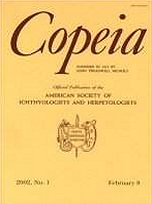The evolution of exaggerated structures that function as weapons in sexually dimorphic species is often explained by intra-sexual selection related to male combat, as these structures are used in fights among males and can determine dominance during such interactions. In many lizard species, males have a larger head than females, a condition attributed to intra-sexual selection. Although head size has been shown to predict dominance in lizards, the way that head size influences dominance remains unclear. We staged interactions between body size-matched male Venerable Collared Lizards (Crotaphytus antiquus) in the laboratory to test the hypothesis that harder-biting males would be dominant over males with weaker bite-force performance. Winners of staged interactions bit significantly harder than losers, but no measured morphological trait was significantly different between winners and losers. This result indicates the strong role of weapon performance, as opposed to weapon morphology, in determining dominance.
How to translate text using browser tools
1 May 2006
Bite-Force Performance Predicts Dominance in Male Venerable Collared Lizards (Crotaphytus antiquus)
Jerry F. Husak,
A. Kristopher Lappin,
Stanley F. Fox,
Julio A. Lemos-Espinal
ACCESS THE FULL ARTICLE





